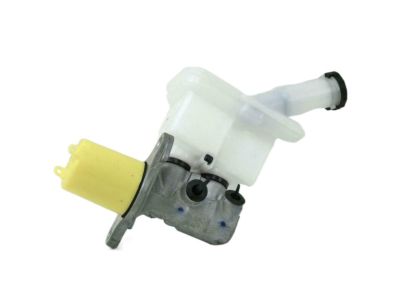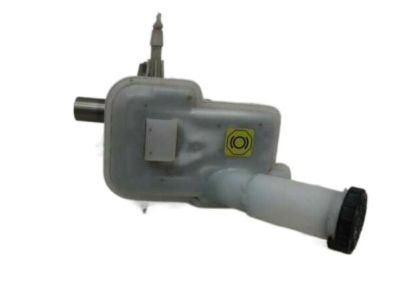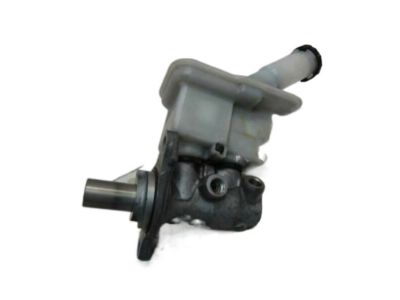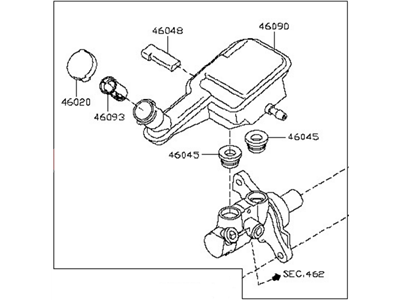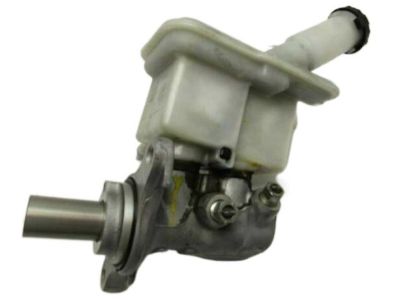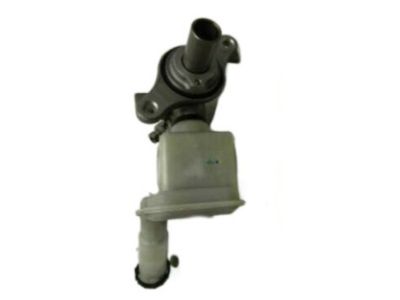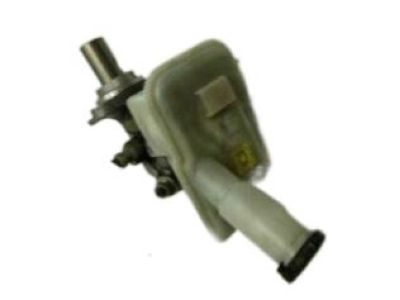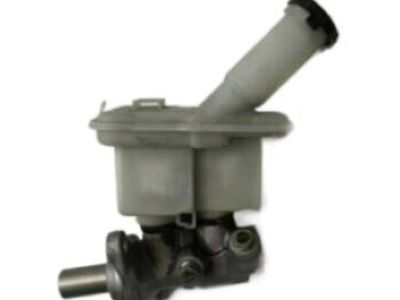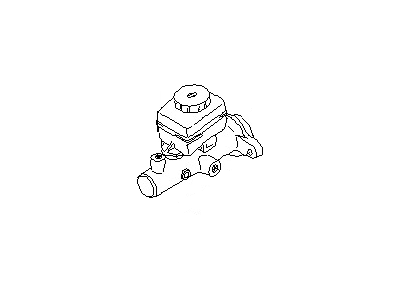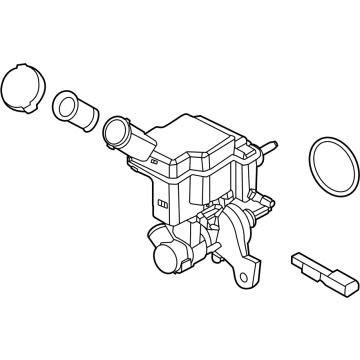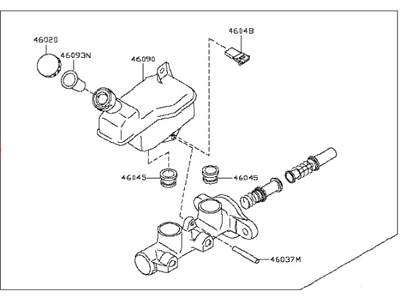×
- Hello
- Login or Register
- Quick Links
- Live Chat
- Track Order
- Parts Availability
- RMA
- Help Center
- Contact Us
- Shop for
- Nissan Parts
- Nissan Accessories

My Garage
My Account
Cart
Genuine Nissan Versa Brake Master Cylinder
- Select Vehicle by Model
- Select Vehicle by VIN
Select Vehicle by Model
orMake
Model
Year
Select Vehicle by VIN
For the most accurate results, select vehicle by your VIN (Vehicle Identification Number).
14 Brake Master Cylinders found

Nissan Versa Cylinder Assy-Brake Master
Part Number: D6010-3BA6A$231.35 MSRP: $342.57You Save: $111.22 (33%)Ships in 1-3 Business Days
Nissan Versa Cylinder Assy-Brake Master
Part Number: D6010-3BA6B$231.35 MSRP: $342.57You Save: $111.22 (33%)Ships in 1-3 Business DaysNissan Versa Cylinder Brake Master
Part Number: D6010-EM31A$207.27 MSRP: $306.90You Save: $99.63 (33%)Ships in 1-3 Business DaysNissan Versa Cylinder Assy-Brake Master
Part Number: D6010-3BA5B$204.03 MSRP: $302.10You Save: $98.07 (33%)Ships in 1-3 Business DaysNissan Versa Cylinder Assy-Brake Master
Part Number: D6010-5EE0B$257.66 MSRP: $381.52You Save: $123.86 (33%)Ships in 1-3 Business DaysNissan Versa Cylinder Assy-Brake Master
Part Number: D6010-3BA5A$204.03 MSRP: $302.10You Save: $98.07 (33%)Ships in 1-3 Business DaysNissan Versa Cylinder Assy-Brake Master
Part Number: D6010-EM30A$207.27 MSRP: $306.90You Save: $99.63 (33%)Ships in 1-3 Business DaysNissan Versa Cylinder Assy-Brake Master
Part Number: D6010-5EE0A$290.44 MSRP: $443.30You Save: $152.86 (35%)Ships in 1-3 Business DaysNissan Versa Cylinder Assy-Brake Master
Part Number: 46010-EM31A$207.27 MSRP: $306.90You Save: $99.63 (33%)
Nissan Versa Brake Master Cylinder
If you need any OEM Nissan Versa Brake Master Cylinder, feel free to choose them out of our huge selection of genuine Nissan Versa Brake Master Cylinder. All our parts are offered at unbeatable prices and are supported by the manufacturer's warranty. In addition, we offer quick shipping to have your parts delivered to your door step in a matter of days.
Nissan Versa Brake Master Cylinder Parts Questions & Experts Answers
- Q: How do you remove and install a master cylinder on Nissan Versa?A:In order to dismantle the Brake Master Cylinder, first the battery and housing of the air filter have to be pulled off. Remove the electrical connector that supplies power to the fluid level warning switch and if the transaxle is a manual type, also remove the clutch fluid hose and plug the line. Expel as much fluid from the reservoir as is possible utilizing a syringe. Put the rags at the bottoms of the fittings and gather caps or plastic bags, intending to cover the ends of the lines once removed. Remove the fittings at the end of the Brake Lines which feed into the Brake Master Cylinder if at all you have not rounded the flats, use the flare nut wrench to do this. Remember that brake fluid harms the car's paint and apply some precaution by covering any naked part of the body and preventing fluid spillage. Disconnect the brake lines from the Brake Master Cylinder by pulling the brake lines as far as possible and securing the free ends with caps. Loosen and take off the nuts that hold the Brake Master Cylinder to the power booster, and gently, but safely, slid it off the studs without spilling any of the fluid. To bleed, for instance, install the new Brake Master Cylinder on a bench via a vise and fixed bleeder tubes on the outlet ports. Add the type of brake fluid recommended for the specific car into the reservoir and gently pump the pistons back into the Brake Master Cylinder to force out the air into the reservoir in a cycle until no formation of bubbles is observed. Also, the bleed tubes, the open ports should be plugged, and on the final process the reservoir cap is put on while the bleed tubes are removed one at a time. Place a new O-ring seal in the Brake Master Cylinder and lubricate same with silicon grease as well as the bore of the power brake booster. The Brake Master Cylinder should be positioned over the studs on the power brake booster, and some nuts have to be tightened with the fingers. Insert the brake line fittings to the Brake Master Cylinder, but slightly adjust the position when threading in and out in order to avoid stripping of threads. Loosely install the brake line fittings and then tighten the mounting nuts to the indicated torque value. You will then pour fluid into the Brake Master Cylinder reservoir, then procedures follow bleeding the lines coming from the Brake Master Cylinder then the rest of the brake system. To bleed the lines take a bottle and have an assistant put pressure on the Brake Pedal when loosening the fitting to let air and oil come out until the oil is free from air. After doing this, let the assistant give back the gear pedal to their normal position after you have tightened the fitting. Last but not the least, rejoining the battery connection and the other relearn processes that were performed earlier.
Related Nissan Versa Parts
Browse by Year
2024 Brake Master Cylinder 2023 Brake Master Cylinder 2022 Brake Master Cylinder 2021 Brake Master Cylinder 2020 Brake Master Cylinder 2019 Brake Master Cylinder 2018 Brake Master Cylinder 2017 Brake Master Cylinder 2016 Brake Master Cylinder 2015 Brake Master Cylinder 2014 Brake Master Cylinder 2013 Brake Master Cylinder 2012 Brake Master Cylinder 2011 Brake Master Cylinder 2010 Brake Master Cylinder 2009 Brake Master Cylinder 2008 Brake Master Cylinder 2007 Brake Master Cylinder
